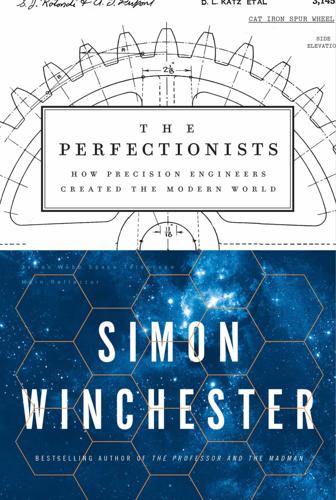
The Perfectionists: How Precision Engineers Created the Modern World
by
Simon Winchester
Published 7 May 2018
A designer could draw onto some transparent medium a large diagram of a piece of integrated circuitry and then, using a device much like an enlarger, but with its lenses refashioned to make its images not bigger but very much smaller, the image could be printed, as it were, onto the silicon oxide of the wafer. Machines capable of performing such a task, known as photolithography, were already available. Letterpress printers, for example, were employing the idea when, at around this time, they began switching to the use of polymer plates. Instead of using hand-assembled forms of lead characters, a printer could now simply type in a page of work and feed it into a photolithography engine, and out would come a page reproduced as a sheet of flexible polymer. All the letters and other characters, all the p’s and q’s, would now be standing type high above the polymer plate’s surface, ready to be impressed onto paper with a platen press, say, which would give the same look and feel to the resulting page of paper as an old-fashioned piece of handmade letterpress work.
…
Naval Research Laboratory) Transit-system satellite (courtesy of the National Air and Space Museum, Smithsonian Institution) Bradford Parkinson Schriever Air Force Base, Colorado (courtesy of Schriever Air Force Base, U.S. Air Force) Ops room of Second Space Operations Squadron ASML EUV photolithography machine (courtesy of ASML) Gordon Moore (courtesy of Intel Free Press) John Bardeen, William Shockley, and Walter Brattain First Bell Labs transistor (courtesy of Windell H. Oskay, www.evilmadscientist.com) Chart showing progress from Intel 4004 to Skylake (courtesy of Max Roser/Creative Commons BY-SA-2.0) Main mirror for James Webb Space Telescope Aerial view of LIGO Hanford Observatory LIGO test mass (courtesy of Caltech/MIT/LIGO Lab) Seiko Building with clock in Ginza (courtesy of Oleksiy Maksymenko Photography) Quartz watch (courtesy of Museumsfoto/Creative Commons BY-SA-3.0 de) Makers of Grand Seiko mechanical watch Bamboo creation from Met exhibit (courtesy of Metropolitan Museum of Art) Example of fine urushi work (courtesy of the Japan Folk-Craft Museum) Prologue The aim of science is not to open the door to infinite wisdom, but to set a limit to infinite error.
…
The enormous ASML devices allow the firm to manufacture these chips, and to place transistors on them in huge numbers and to any almost unreal level of precision and minute scale that today’s computer industry, pressing for ever-speedier and more powerful computers, endlessly demands. It takes an enormous machine to allow for the making of something so infinitesimally tiny as a computer chip. This Twinscan NXE:3350B photolithography machine, made by the Dutch company ASML, would fill three jet cargo aircraft. Intel, the world’s biggest chip maker, buys these $100 million machines by the score. Photograph courtesy of ASML. How the two tasks are managed, the making of the chips and the making of the machines that make the chips, are two of the more memorable and intertwined precision-related sagas of recent years.
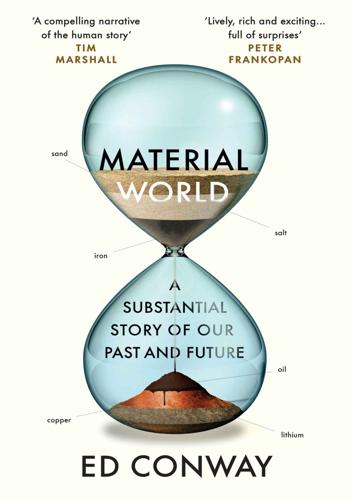
Material World: A Substantial Story of Our Past and Future
by
Ed Conway
Published 15 Jun 2023
If all goes to plan, our silicon wafer will not be touched by a single human hand until its surface is sealed up and it is ready for dispatch.5 That moment won’t come for some time, however, for a single wafer such as ours can spend three or four months whizzing around a fab like this, being carried from one machine to another in a sterile box called a FOUP (a front-opening universal pod). Arguably the most important of these machines carry out what is known as photolithography. For some decades, transistors have been etched on to silicon wafers not by hand or by physical machinery, but by light. The principle is a little like a movie projector, except in reverse. While a projector takes a small image and uses lenses to blow it up to a cinema-sized screen, photolithography begins with a big blueprint of a silicon chip, with all its transistors and features, and uses lenses to project that image down into mind-bogglingly small dimensions.
…
I soon realised that, much as with Read’s pencil, no single person, even those working on the supply chain itself, could fully explain to me the processes – even the very simplified processes – that took place at each stage along this journey. Those working at foundries understood plenty about photolithography and chemical abrasion, but little about how the ultra-pure silicon wafers they were working on were actually made. No one at the quarry digging quartzite from the ground (the chips, it turns out, begin their lives not as grains of sand but as fist-sized lumps of stone) understood much about its eventual destiny.
…
Since Azovstal and its fellow Ukrainian steel mills were responsible for producing nearly half the world’s supply of neon, in the weeks after Tskitishvili began the shutdown, the world began to run short of the gas. This had unexpected consequences for the production of semiconductors, because neon turns out to be another one of those all-important gases pumped from the sub-fab up into the cleanroom in foundries. Without this gas it is hard to control the laser wavelengths in photolithography machines. So the events in Azovstal caused an economic ripple that went far beyond Ukraine, or for that matter the steel industry; soon enough silicon-chip manufacturers in Taiwan, South Korea and even South Wales began to stockpile these gases for fear of a global shortage. So it goes in the Material World, where one obscure side product turns out to be essential for another seemingly unrelated supply chain on the other side of the planet.

Exponential: How Accelerating Technology Is Leaving Us Behind and What to Do About It
by
Azeem Azhar
Published 6 Sep 2021
In 1960, Robert Noyce at Fairchild Semiconductor developed the world’s first ‘integrated circuit’, which combined several transistors into a single component. These transistors were tiny and could not be handled individually by man or machine. They were made through an elaborate process a little like chemical photography, called photolithography. Engineers would shine ultraviolet light through a film with a circuit design on it, much like a child’s stencil. This imprints a circuit onto a silicon wafer, and the process can be repeated several times on a single wafer – until you have several transistors on top of one another. Each wafer may contain several identical copies of circuits, laid out in a grid.
…
One of the first people to understand the power of this technology was Gordon Moore, a researcher working for Noyce. Five years after his boss’s invention, Moore realised that the physical area of integrated circuits was reducing by about 50 per cent every year, without any decrease in the number of transistors. The films – or ‘masks’ – used in photolithography were getting more detailed; the transistors and connections smaller; the components themselves more intricate. And this reduced costs and improved performance. Newer chips, with their smaller components and tighter packing, were faster than older ones. Moore looked at these advances and in 1965 he came up with a hypothesis.
…
To my research team, led by Marija Gavrilov and assisted by Sanjana Varghese, Emily Judson and Joseph Dana. You were bombarded with questions on everything from labour relations in turn-of-the-century New York to the likely timeline for quantum supremacy; from theories of institutional change to the limits of photolithography in semiconductor manufacturing. You not only survived, but flourished. My editor, Rowan Borchers at Penguin Random House, was an instigator and supporter of the project, helping a first-time author figure out how to tell his story. Rowan wrestled the manuscript into shape, gently delivering the most savage cuts.
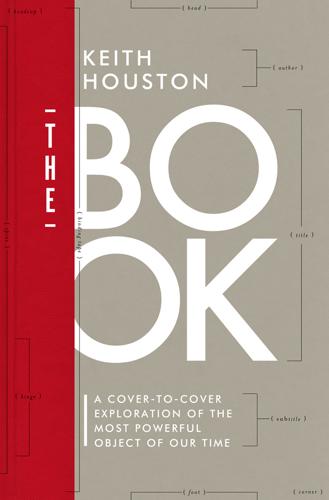
The Book: A Cover-To-Cover Exploration of the Most Powerful Object of Our Time
by
Keith Houston
Published 21 Aug 2016
Halftone printing was crude in comparison to photogravure and other more involved methods of reproducing photographs. Its saving grace was that it worked with, not against, movable type. In 1860, Col. Henry James of the Ordnance Survey, Britain’s state mapping agency, gave photolithography its first big break. Tasked with printing copies of the OS’s maps, James employed Poitevin’s photolithography but added a twist of his own. To duplicate a given map, James first photographed it before exposing the negative onto a dichromated gelatin tissue. But rather than print directly from the fragile tissue, as Poitevin had done, James inked it with greasy lithographic ink, laid it on top of a zinc plate (hence “photozincography,” as he called his system), and ran the lot through a lithographic press.
…
The soft rubber blanket was kinder to metal litho plates than a direct impression on paper and so prolonged the plates’ useful lives, and it conformed to almost any moderately flat printing medium so that cheap, rough cardboard was as tractable as glossy photographic paper. And of course, as Ira Rubel had realized, the resulting printed image was sharper to boot.55 There was almost no aspect of lithographic printing that was not improved. By the 1960s, web-fed offset lithographic presses had united with photolithography to be crowned as the undisputed champions of mass-produced printing. The combined process was versatile, cheap, and adaptable to almost any kind of printing. First, the contents of the book, magazine, or newspaper to be printed were laid out however its makers desired—text might be set using movable type, a Linotype or Monotype machine, or the “cold type” of their phototypesetting replacements; images could be woodcut prints, paintings, drawings, or photographs—the methods employed made no difference.
…
Oxy I 1), 264–65, 276 papyrus scrolls, xv, xvn, xvi, 10, 244, 253, 255, 260, 263, 311 accessories for, 254–55 Egyptian invention of, 243–45, 247–56 electronic documents as analogous to, 254 in Greco-Roman world, 244, 250–56 inefficiency of, 253–56 as information technology, 9 parchment, xv, 55, 99, 101, 287 calfskin, xii, 31, 123, 304 Christian adoption of, 27–28, 56 codices of, 272–77, 284–88, 291–93, 311–12 cost of, 62, 97 etymology of, 31 goatskin, 20, 28, 30 for illuminated manuscripts, 169 ink and, 96–97 invention of, 18–21, 23–24 Jewish adoption of, 25–27 making of, 24–25, 27, 28–31, 29, 33–34 in making of gold and silver leaf, 171 paper’s displacement of, 36 sheepskin, 31, 312 shortcomings of, 25 spread of, 24 as superior to papyrus, 25, 31 see also vellum parchmenters, 30 Parliament, British, 323–24 part number, 1 part title, 1 pasteboard covers, 302–3 Patrick, Saint, 156–57 Pencil of Nature, The (Talbot), 228–29, 228 pencils, 259 Penguin Books, 324 penknives, 169, 170 pens, 84, 85 quill, 97, 101, 169, 170 reed, 16, 47, 94, 95 Pension Office, US, 146, 148 perfect binding, 309 Pergamon, 21, 23–24, 28, 276 and invention of parchment, 19–21, 23–24 library at, 19, 23 “Permanence of Paper for Publications and Documents in Libraries and Archives,” 74 Permanent Conference on Printing, 326–27 Persian Empire, 270 Peter the Venerable, 56, 62 Petrarcha, Francesco, 319 Petrie, Flinders, 15, 84, 92 Petticoat Lane, 63 Pfister, Albrecht, 199, 200, 201, 202 Biblia pauperum of, 200, 201 Phaistos Disk, 109 Philadelphia, Pa., 214 Philo, 96–97 Philobiblon Society of Great Britain, 189 Philometor, see Ptolemy VI Philometor, pharaoh Phoenicia, Phoenicians, 9 alphabet of, 91–92 photography, 227 in book and newspaper illustration, xvii, 228–29, 230–31, 233 halftone, 230–31, 231, 233 photogravure, 231, 233 photolithography, 233, 236 phototypesetting, 151 photozincography, 233, 235 Picts, 161 Pio, Alberto, 316 pippins, 30 plague, bubonic, 102, 105 Plan of St. Gall, 167 platens, 122–23, 130, 131, 132 plates (standalone illustrations), 210, 231 Plato, 8, 15 Pliny the Elder, 10–11, 15, 95, 96, 113, 243, 274, 276 on invention of parchment, 19– 20 on making papyrus scrolls, 11– 14 on papyrus-making, 17 Pliny the Younger, 28–29, 274 plummets, 169, 170 poetry extract, 71 Poitevin, Alphonse-Louis, 233 Poitiers, battle of (732), 53 Polo, Marco, 175–77, 187, 189, 190 polyptychs, 259 Pompeii, 10, 255, 276 Ponton, Mungo, 229 Popilius Laenas, Gaius, 22–23 Porten, Bezalel, 270–72 potassium dichromate, 229 pouncing, 30, 97 Prague, 219 Prang, Louis, 226 PREPS sustainability standard, 75, 329 printer’s devil, 144 printing: Chinese invention of, 177–81, 183–86 Gutenberg and, 107–9 history of, 109 in Japan, 183 matrices in, 115, 116 molds in, 116–18, 117 punches in, 114–16 in Renaissance, 202–13 with wood blocks, see woodblock printing printing presses, xvii, 174 Albion, 130 Columbian, 130, 131 denunciations of, 128–29 of Gutenberg, 122–23 of iron, 129–30 Koenig’s design for, 132–34, 134 modernization of, 129–52 Nicholson’s design for, 130, 132, 133 rotary, 130, 132, 133, 135 spread of, 126–27, 128 Stanhope, 130, 133 Prisse d’Avennes, Achille-Constant-Théodore Émile, 245, 247–48 Prisse Papyrus, 245, 247–48 Proctor, Robert, 316 prose extract, 89 protocol, etymology of, 251 protokollon, 95, 251 Ptahhotep, Egyptian vizier, 248 Ptolemaic dynasty, 19–20, 23, 88, 159, 249–50 Ptolemy I, pharaoh, 249 Ptolemy III Euergetes, pharaoh, 251–52 Ptolemy VI Philometor, pharaoh, 21–22 Ptolemy VII, pharaoh, 22n Ptolemy VIII Euergetes, pharaoh, 22 pugillares (writing tablets), 274 pugillares membranae, 276 pumice, 29, 30, 97 punches, 114–16, 115 Puyemrê, 7 Pythagoras’s constant, 324–25 Qin dynasty, 38, 39, 178 Qin Shi Huang (First Emperor), 178 quarto (book size), 313, 314, 314, 316, 318, 325–26 quaternio (quire), 312–13 Quintilian, 259 quire (quaternio), 312–13, 330 Qu’ran, 56, 58 Ra, 158 Ragab, Hassan, 11–12, 14, 16 rag and bone men, 63 rags, in papermaking, 36, 37, 42–43, 55, 61–64, 66 Ragyndrudis Codex, 296–98 railway novels, 309, 331 Rainer, Archduke of Austria, 37 Rameses III, pharaoh, 249 Rashid (Rosetta), Egypt, 90 Rath, Erich von, 209 Reagan administration, 328 Réaumur, René Antoine Ferchault de, 68–69 “Recollections of the Arabian Nights” (Tennyson), 54 recto, 264 recto running head, 11 Red Sea, 245 Reid, Whitelaw, 144 Renaissance, 36, 60, 114, 318, 330 printing in, 202–13 “Report of Wenamun,” 9 Revelations, 28 Revolutionary War, 63–64 Riedel, Friedrich, 132 Robert, Louis-Nicolas, 64–65, 69, 135 Robert Havell and son, 215 Roberts, T.
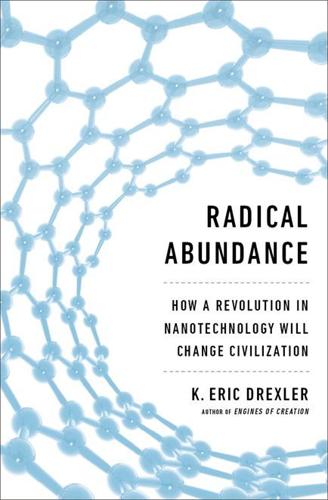
Radical Abundance: How a Revolution in Nanotechnology Will Change Civilization
by
K. Eric Drexler
Published 6 May 2013
Manufacturing Without Moving the Parts: Nanolithography for Chips One branch of manufacturing has already entered the nanoscale world, applying specialized techniques to fabricate devices with billions of parts already in place (no assembly required). This is, of course, chip manufacturing, which uses lithographic techniques that, in essence, resemble conventional printing but work with different materials at a much smaller scale. Through visible-light photolithography, printers can lay down patterns of ten million pixels; using ultraviolet-light photolithography, semiconductor manufacturers lay down patterns that equate to billions of pixels, and on a chip far smaller than a printing plate. Then, in processes similar to developing an image on photographic film, manufacturers use chemical methods to bring out these patterns, not as light and dark images, but instead as contours in a plastic film on a silicon wafer.
…
When compared to the mechanically driven, atomically precise operations that define APM, semiconductor lithography shows more contrasts than similarities. It is telling that semiconductor fabrication facilities are huge, housing arrays of machines that can cost billions of dollars, while molecular fabrication today—with full atomic precision, beyond the reach of even high-resolution photolithography—is often done by university students using tools like pipettes and glass beakers. A Special Manufacturing Method: 3D Printing Another emerging method for manufacturing also breaks the pattern of making and then assembling parts: 3D printing, sometimes known as additive manufacturing. 3D printing differs from the traditional ways of shaping materials.
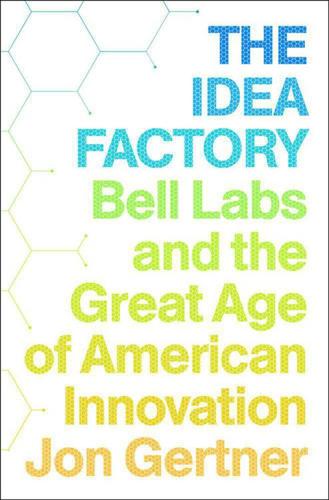
The Idea Factory: Bell Labs and the Great Age of American Innovation
by
Jon Gertner
Published 15 Mar 2012
Some had arisen from Baker’s research department and others from the much larger development department. As a result, there were now a multitude of new transistor types and important new methods of manufacturing, such as the technique—resembling art etchings done on a minuscule scale—known as photolithography. In keeping with AT&T’s agreement with the federal government, the patents for these inventions and processes were licensed to a number of other companies, not only large industrial shops like General Electric and RCA, but also two fledgling semiconductor companies known as Texas Instruments and Fairchild Semiconductor.
…
Such a development perhaps suggested that the landscape of competitiveness in American electronics, something that Mervin Kelly had written about in the closing days of World War II, was now very much a reality. At the very least, it proved that even the great technical minds at Bell Labs, Jack Morton especially, could misjudge the future. “We had all the elements to make an integrated circuit,” Tanenbaum adds. “And all the processes—diffusion, photolithography—were developed at Bell Labs. But nobody had the foresight except Noyce and Kilby.” IN THE MID-1950S, Bell Labs hired back Charles Townes—Charlie to everyone at Bell Labs—the inventor of the maser. Townes was still a professor at Columbia, but he now visited Murray Hill regularly as a paid consultant.
…
B., 224 Morton, Jack, 108–9, 110, 112, 113, 116, 152, 163, 168, 170, 197, 210, 223, 250, 252, 253, 267, 311–13 Morton triode, 197 Motorola, 279–80, 295–96, 297 music, computer, 225, 244, 325–27 NASA, 208, 210–11, 215–17, 220, 221, 224, 248 National Academy of Sciences, 306, 311, 344 National Reconnaissance Office (NRO), 247, 261 National Security Agency (NSA), 147, 246, 247, 249, 342 Nature, 338 NCR, 333 Netscape, 334 New Scientist, 247 New Yorker, 192, 196, 242 New York Times, 31, 62, 64, 199, 222, 224, 233, 273, 301, 302, 337, 356 New York World’s Fair, 228–31, 262 Nike missiles, 160–61, 164, 182 Nobel Prize, 2, 14, 37, 43, 56, 181–82, 184, 244, 317, 322, 331, 355 noise, 292 Noll, Mike, 237, 243 Noyce, Robert, 181, 251, 252–54, 262, 290 nuclear weapons, 51, 59–60, 65–66, 74, 104, 159, 160, 356 Nyquist, Harry, 135 Odlyzko, Andrew, 334 Ohl, Russell, 84–85, 86 oil-drop experiment, 15–16, 22, 152, 267 Oliver, Barney, 126, 197, 319, 323, 358 O’Neill, Eugene, 221, 222 Oppenheimer, Robert, 155, 157 Organization Man, The (Whyte), 184 oscillating elements, 97, 104 O’Sullivan, William, 210 Packard, Dave, 308 pagers, 229, 287–88 Paine, Thomas, 12 patents, 46, 57, 98 licensing of, 182–83, 186, 251, 270 Nyquist and, 135 for telephone, 17–18, 98 for transistor, 97–100, 107, 111 PCM (pulse code modulation), 126–27, 129, 197, 234–35, 323 Pearson, Gerald, 87, 88, 91, 96, 112, 166, 171, 172, 316 Pfann, Bill, 114, 134 photography, digital, 261 photolithography, 251, 254 Physical Review, 100 Pickering, William, 210 Picturephone, 229–31, 233, 235, 236, 260, 262–65, 279, 289, 296, 333 Pierce, John, 2, 3, 38–39, 189–204, 212–13, 225–27, 232, 234, 238, 242, 246, 247, 249, 253, 265, 267, 273, 278, 285, 297, 300, 304, 311, 323–27, 332, 343, 344, 348–50, 352, 357–60 antitrust suit and, 273–74 Baker and, 238, 243–44 Brattain and, 197 at Caltech, 191–93, 324, 325 “Don’t Write: Telegraph,” 202–3 early life of, 191–92 How to Build and Fly Gliders, 189, 190, 192, 200 Japan Prize awarded to, 359 Kelly and, 195–96, 306–7, 345–46 lasers and, 255, 256, 258, 276 mobile phones and, 282–83 music and, 225, 244, 325–27 New York World’s Fair and, 228–31 Parkinson’s of, 323 Picturephone and, 230 retirement of, 267 satellite work of, 203–4, 205, 207–27, 228, 254 Shannon and, 196–97, 201, 225, 318, 323–24 Shockley and, 194–95, 197, 225 traveling wave tube and, 198–201, 202, 205–6, 207–8, 210 Wells and, 201–2 writing career of, 200–201, 202–3 Piore, Emmanuel, 306 plasma physics, 257 Playboy, 314 Poe, Edgar Allan, 124 Pollak, Henry, 123, 238, 239–40 Porter, Phil, 286, 287–88, 291, 294, 295 President’s Foreign Intelligence Advisory Board (PFIAB), 247, 248 pulse code modulation (PCM), 126–27, 129, 197, 234–35, 323 Purdue University, 97, 100, 105 quantum mechanics, 42, 55, 81, 202 Quarles, Donald, 50 quartz, 51, 62 Rabi, Isidor Isaac, 43, 207 radar, 60, 64–67, 71, 73, 86, 134, 157, 195, 270, 294 Distant Early Warning line, 161, 182 magnetron and, 67–69, 70, 71 radio, 27, 47, 66–67, 76, 177, 255, 258, 279–80, 290, 292, 294 astronomy, 106 Raytheon, 163 RCA, 163, 251, 303, 348 Reader’s Digest, 178 Rice, Steve, 357 Ring, Doug, 281–82, 286 Riordan, Michael, 105, 354 Ross, Ian, 180, 221, 239, 245, 250–53, 270–71, 301, 309, 314, 327 Ross, Pearley, 53 Rowell, John, 154 rubber, 82, 242–43 Saarinen, Eero, 284–85 Sandia Labs, 159–61, 271 satellites, 203–4, 205, 207–27, 261 Communications Satellite Act and, 224 Echo, 212–20, 221, 222, 224, 225, 226, 227, 228, 244, 254, 323, 340 Explorer, 208 Sputnik, 208 Telstar, 220, 221–24, 225, 226, 228, 229, 340 Scaff, Jack, 84, 85, 86 Schawlow, Arthur, 254–55, 257 Schon, J.

The Chip: How Two Americans Invented the Microchip and Launched a Revolution
by
T. R. Reid
Published 18 Dec 2007
The group was long on mechanical talent and short on managerial skills, but one of the founders turned out to have both: Bob Noyce. A slender, square-jawed man who exuded the easy self-assurance of a jet pilot, Noyce had an unbounded curiosity that led him, at one time or another, to take up hobbies ranging from madrigal singing to flying seaplanes. His doctorate was in physics, and his technical specialty was photolithography, an exotic process for printing circuit boards that required state-of-the-art knowledge of photography, chemistry, and circuit design. Like Jack Kilby, Noyce preferred to direct his powerful intelligence at specific problems that needed solving, and he shared with Kilby an intense sense of exhilaration when he found a way to leap over some difficult technical obstacle.
…
Over time, the industry developed the “negative pressure” fabrication room—with a steady suction taking air, and dust, out of the room. The white nylon “bunny suit” that fab workers wear to prevent contamination has become a symbol of the microchip industry. And the machinery that “prints” circuitry onto CD-size “wafers” of silicon is so complex and so precise that a single photolithography unit costs tens of millions of dollars. But as the industry learned how to operate at ever-tinier dimensions, it found itself in a delightful position. A chip containing 10,000 components required no more silicon, and not much more labor, than one with only 5,000 components. It was as if a fast-food stand had found a way to turn out two burgers using the same amount of meat and bread that it had previously used for one.
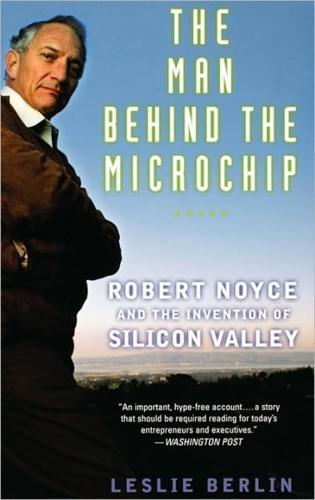
The Man Behind the Microchip: Robert Noyce and the Invention of Silicon Valley
by
Leslie Berlin
Published 9 Jun 2005
Moore’s needs were so specialized, and the pickings so thin, that he ultimately had to order the elements he needed from a company in Sweden and design and build the furnaces himself.35 94 THE MAN BEHIND THE MICROCHIP Once the silicon was properly diffused, it was time to start differentiating the individual transistors. This was done through a process called photolithography, an area that Noyce and Jay Last led together at Fairchild. The two men created a pattern that showed where every transistor would appear on the wafer, how the current would pass through the transistors, and where the transistors would be attached to the canisters that would then be plugged into the IBM system.
…
Fairchild could have a Menlo Park firm deliver de-mineralized water, purified to the precise standards the lab required for washing components and mixing chemicals. They could have lenses ground at a company a few miles down the road. It was hard to believe that only two years before, Moore needed to build his own furnaces and Noyce had to scrounge for photolithography lenses at a camera shop.63 Sweeping developments unrelated to electronics also benefited Fairchild Semiconductor and Bob Noyce. The increasing mechanization of agriculture in California freed up thousands of low-skilled workers for work in electronics assembly plants. An aggressive state-sponsored infrastructure-building spree changed zoning regulations and installed a network of roads and sewer pipes to attract people and industry to California.
…
See also Hoerni, Jean; planar process Page Mill Partners, 219 Palevsky, Max, 166 Palo Alto, California, 56–59 Palo Alto Times, 95 patents, 53–54, 66, 70, 73, 87; at Fairchild, 90, 97, 99–100, 102–4, 106–10; integrated circuit, 1, 109, 110–11, 139; and intellectual property, 79, 87, 181, 293; licensing of, 55, 79, 117, 134–35, 139–40, 269. See also Noyce, Robert H., patents Pedersen, Karl, ix Penang, Malaysia, 207 J.C. Penney, 242 Perkins, Tom, 240 personal computer (PC), 226–27, 250–52, 278 philanthropy: of Betty Noyce, 234; of Robert Noyce, 210–12, 228–29, 274, 306 Philco, 42, 46–52, 67–68 photolithography, 94 Physical Review, 66 Pickle, J. J., 287 Pires, Paul, 299–300 planar process, 108, 109, 111, 141, 245. See also oxide layers P-N junction, 26, 93–94, 99 policy and procedures book, 116 Political Action Committee (PAC), 267 Popular Science, 7, 16 Population Explosion, The (Ehrlich), 212 Portland, Oregon, 237 Prestowitz, Clyde, 267, 268–69 Procter and Gamble, 146 quantum tunneling, 65–66 Radio Shack, 213 Ramstad, Evan, ix, 387 random access memory (RAM), 180 Raytheon, 161 R&D (research and development): cooperative, 281; at Fairchild Semiconductor, 90, 97, 102, 106–8, 400 Index R&D (continued ) 122–23, 125–26, 130–31; government funding of, 130–31; at Intel, 171, 283; method of, 175; at MIT, 29; at Shockley, 74, 76–77, 86 Reagan, Ronald, 5, 256, 266–67, 272, 274, 301 Redmond, Marilyn, x Reed, John, 387 Reid, T.

The Singularity Is Near: When Humans Transcend Biology
by
Ray Kurzweil
Published 14 Jul 2005
In the case of technology, research dollars are invested to create the next paradigm. We can see this in the extensive research being conducted today toward three-dimensional molecular computing, despite the fact that we still have at least a decade left for the paradigm of shrinking transistors on a flat integrated circuit using photolithography. Generally, by the time a paradigm approaches its asymptote in price-performance, the next technical paradigm is already working in niche applications. For example, in the 1950s engineers were shrinking vacuum tubes to provide greater price-performance for computers, until the process became no longer feasible.
…
It would enable large-scale circuits to be created in test tubes rather than in multibillion-dollar factories, using chemistry rather than lithography, according to UCLA scientists.17 Purdue University researchers have already demonstrated self-organizing nanotube structures, using the same principle that causes DNA strands to link together in stable structures.18 Harvard University scientists took a key step forward in June 2004 when they demonstrated another self-organizing method that can be used on a large scale.19 The technique starts with photolithography to create an etched array of interconnects (connections between computational elements). A large number of nanowire field-effect transistors (a common form of transistors) and nanoscale interconnects are then deposited on the array. These then connect themselves in the correct pattern. In 2004 researchers at the University of Southern California and NASA's Ames Research Center demonstrated a method that self-organizes extremely dense circuits in a chemical solution.20 The technique creates nanowires spontaneously and then causes nanoscale memory cells, each able to hold three bits of data, to self-assemble onto the wires.
…
We already have proofs of concept for all of the major requirements for three-dimensional molecular computing: single-molecule transistors, memory cells based on atoms, nanowires, and methods to self-assemble and self-diagnose the trillions (potentially trillions of trillions) of components. Contemporary electronics proceeds from the design of detailed chip layouts to photolithography to the manufacturing of chips in large, centralized factories. Nanocircuits are more likely to be created in small chemistry flasks, a development that will be another important step in the decentralization of our industrial infrastructure and will maintain the law of accelerating returns through this century and beyond.
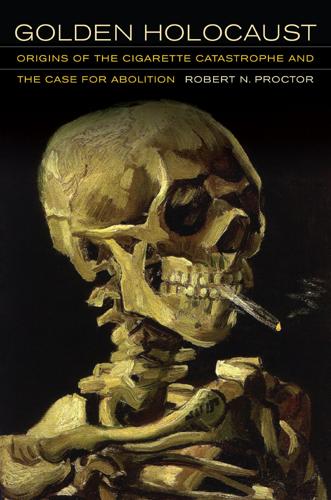
Golden Holocaust: Origins of the Cigarette Catastrophe and the Case for Abolition
by
Robert N. Proctor
Published 28 Feb 2012
Tobacco manufacturers were the first to advertise using color lithography (in the 1850s) and among the first to use coupons and photo inserts (cigarette cards) to attract customers. Cigarettes were the first items advertised by skywriting and also the first products sold using billboard panel photolithography (in the 1970s). Tobacco mongers pioneered animated cartoons (for use in movie theaters) along with product placements in Hollywood films, “impulse buying” in grocery stores (by clever shelf placement), human trademarks such as Roventini, “graphic branding” on towels and the like, brand-linked merchandising of items such as T-shirts and coats (in Marlboro stores) and even product-linked vacations and “expeditions” (Marlboro Adventure Teams and Camel Expeditions, as we shall see).
…
Reynolds by this time was spending 15 percent of its advertising budget on Sunday comics, reaching 23 million readers in 149 different newspapers. Hearst’s protest drew a polite but firm riposte from S. Clay Williams, Reynolds’s chairman of the board, who claimed that comic strip adverts were in no way designed to attract children; the comics (he said) were principally for adults.10 Billboard photolithography. Yet another invention of the tobacconists followed the 1970 federal ban on tobacco advertising on television. Manufacturers were desperate to find new ways to reach customers, to fill the void from the broadcast ban. Billboards had been a common advertising edifice prior to the Second World War, though television had caused something of a demotion in the 1950s and 1960s.
…
(biostatistician, Mayo Clinic) Bernays, Edward L. (propaganda and public relations guru) Bernhard, Baron (American inventor) Bero, Lisa (Professor of Clinical Pharmacy, UCSF) Bhutan Bible, Geoffrey C. (President and CEO, Philip Morris) Bible, the bidis Bigger Hair Tobacco. See Nigger Hair Tobacco billboard photolithography Bill of Rights Biotech Nine birdkeeping, as cause of lung cancer Blair, Tony (British Prime Minister) Blaisdell, George G. (inventor of the Zippo) Blalock, John V. (Director of Public Relations, Brown & Williamson) Blatnik Report (1957) Blau, Theodor H. (Professor of Psychology, University of South Florida) Bloomberg, Michael (Mayor of New York) Blum, Alan (Professor of Family Medicine, University of Alabama) Boal, Iain (linguist and editor of “Retort”) Bobby (Hollywood film) Bock, Fred G.

Physics of the Future: How Science Will Shape Human Destiny and Our Daily Lives by the Year 2100
by
Michio Kaku
Published 15 Mar 2011
Fortunately, since progress will be slow and the replicator is a century or so away, society will have plenty of time to debate the merits and implications of this technology and adjust to this new reality so that society does not disintegrate. More than likely, the first replicators will be expensive. As MIT robotics expert Rodney Brooks says, “Nanotechnology will thrive, much as photolithography thrives—in very expensive, controlled situations rather than as a freestanding mass-market technology.” The problem of unlimited free goods will not be so much a problem. Given the sophistication of these machines, it may take many decades after they are first created to bring down the cost.
…
: Ibid. 17 “Much like you can’t make a boy and a girl fall in love”: Rudy Baum, “Nanotechnology: Drexler and Smalley Make the Case for and Against ‘Molecular Assemblers,’ ” Chemical & Engineering News 81, December 1, 2003, pp. 37–42, http://pubs.acs.org/cen/coverstory/8148/8148counterpoint.html. 18 “If a self-assembler ever does become possible”: BBC/Discovery Channel, Visions of the Future, Part II, 2007. 19 “Nanotechnology will thrive, much as photolithography thrives”: Rodney A. Brooks, “Flesh and Machines,” in Denning, p. 63. 5. FUTURE OF ENERGY: ENERGY FROM THE STARS 1 the world consumes about 14 trillion watts of power: Kurzweil, p. 242. 2 U.S. oil reserves were being depleted so rapidly: www.mkinghubbert.com/speech/prediction. 3 “Food and pollution are not”: Sheffield, p. 179. 4 China will soon surpass the United States in wind power: www.gwec.net/index.php?

Everyware: The Dawning Age of Ubiquitous Computing
by
Adam Greenfield
Published 14 Sep 2006
It's true that Gordon Moore made his observation in the long-ago of 1965, and so one might be forgiven for thinking that his "law" had little left to tell us. But as far as anyone knowledgeable can tell, its limits are a long way off. A vocal minority continues to assert the belief that even after the photolithography used in chip fabrication hits the limits inherent in matter, more exotic methods will allow the extension of Moore's unprecedented run. Whether or not Moore's law can be extended indefinitely, there is sufficient reason to believe that information-processing componentry will keep getting smaller, cheaper, and more powerful for some time yet to come.

Double Entry: How the Merchants of Venice Shaped the Modern World - and How Their Invention Could Make or Break the Planet
by
Jane Gleeson-White
Published 14 May 2011
By the 1970s public companies were beginning to use their annual reports as much as a tool for public relations—to communicate new concepts like ‘corporate identity’, for example—as for delivering financial accounts and other information. They exploited the latest technologies—first in paper production, photolithography and typography, later in electronic communications and the internet—and invested thousands of dollars to produce professionally designed, visually appealing reports. The design innovations of annual reports often express the changing fortunes of the market: for example, the British clothing company Burton PLC produced lavish fashion-related annual reports during the high-rolling, bullish 1980s and then matched the mood of the more straitened, bearish early 1990s with reports in sombre grey minimalism.

The Professor and the Madman: A Tale of Murder, Insanity and the Making of the Oxford English Dictionary
by
Simon Winchester
Published 27 Sep 1998
The original lead-fronted, steel-and-antimony-backed plates, cast in the nineteenth and early twentieth centuries, from which all the many printings of the OED—from the individual fascicles made as the books were being edited, to the final twelve-volume masterpiece of 1928—had been made. The press, my friend explained, had recently adopted more modern methods: computer typesetting, photolithography, and the like. The old ways of the letterpress men—with their slugs of lead and their typesticks, their em-quads and their brasses and coppers, their tympan paper and their platen brushes and their uncanny ability to read backward and upside down at speed—were at long last being abandoned. The plates, and all the job-cases of type for hand-setting, were now being tossed away, melted down, carried off.
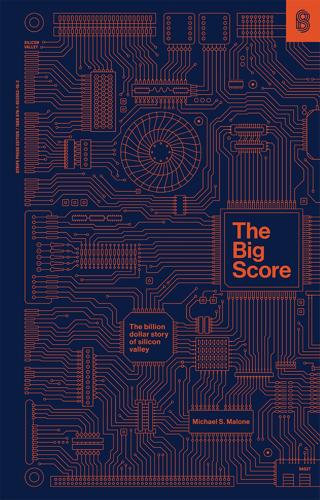
The Big Score
by
Michael S. Malone
Published 20 Jul 2021
The idea, Hoerni’s, had a lot going for it, notably the use of silicon rather than the more traditional germanium. An obstacle, though, was the diffusion process, which was only two years old and, since its development at Bell Labs, had never been commercially feasible. Making it so would be the company’s first goal. Jobs were divvied up according to skills. Bob Noyce and Jay Last took photolithography; Eugene Kleiner, the ex-professor, took administration; Gordon Moore and Jean Hoerni, the two big research guns, took on the diffusion problem; Sheldon Roberts grew the silicon crystals; Victor Grinich and the company’s first new employee, Murray Siegel, defined the characteristics of the finished product and developed applications.
…
Hoerni took the process of sandwiching layers of oxides on the surface of silicon and ran it as far as it would go, until he came up with a transistor that had been flattened out into two dimensions, a plane—“planar,” the process would be called—that looked like a bull’s-eye with the outer ring pulled out at one point to make a teardrop. But that was just the start. Astute scientists that they were, the Fairchilders quickly realized that with photolithography this same transistor could be repeated over and over again on the surface of a silicon chip in a systematic manner and with built-in interconnections between them. Said Bay, “As soon as the planar process was developed, we were all saying that now we can put devices on a chip, interconnect them, and not have to worry about shorting out the junction.”

Microchip: An Idea, Its Genesis, and the Revolution It Created
by
Jeffrey Zygmont
Published 15 Mar 2003
The Busicom circuit rehab wasn't the only moonlight project that Manager of Applications Research Ted Hoff undertook at the time. He also worked on a process to automate mask cutting at Intel. Masks were the all-important stencils that blocked out particular portions of bald silicon wafers during photolithography, the manufacturing step that laid out the transistors- to-be, as well as defined the pathways among them for the interconnecting strips of metal that would be bonded into a chip. Typically the masks were cut by hand. But Intel's upcoming memory chips would be laid out in orderly and repetitive patterns.

The Nature of Technology
by
W. Brian Arthur
Published 6 Aug 2009
But a technology (or more precisely, its base principle) can only be pushed so far before some part of its system runs into a barrier that restrains it. Thus developers press integrated circuits to become denser, therefore accommodating more components; but at some point the process that produces them, photolithography, becomes limited by the wavelength of light. They press radar in its early days to transmit at ever higher frequencies, so as to achieve more accuracy and better discrimination among targets; but at ever higher frequencies, a given transmission source falters in power. A technology can only be pressed so far before it runs into some limitation.

Building the Cycling City: The Dutch Blueprint for Urban Vitality
by
Melissa Bruntlett
and
Chris Bruntlett
Published 27 Aug 2018
According to Braakman, the site selected for the Hovenring was definitely not arbitrary: “It was a major three-lane roundabout with no grade separation, a lot of congestion problems, and a lot of road-safety issues.” That particular intersection was also located on a planned east–west cycling corridor linking the city center, the airport, and Veldhoven, home to the ASML campus: a Philips spinoff and the largest supplier of photolithography systems in the world. “In order to give right-of-way, and get more traffic through that intersection, we had to separate the networks of driving and cycling,” says Braakman. After considering numerous design options, including a series of Berenkuil-like sunken tunnels, the Dutch engineering firm ipv Delft presented the stunning circular suspension bridge concept, which took vertical separation to the next level.
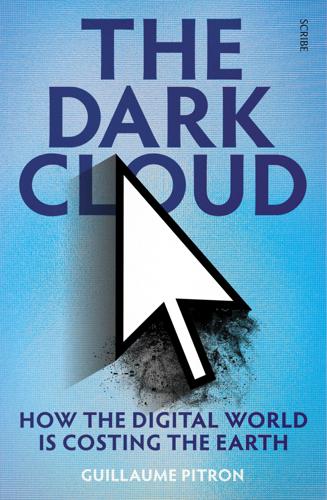
The Dark Cloud: How the Digital World Is Costing the Earth
by
Guillaume Pitron
Published 14 Jun 2023
So, fifty microchips on a wafer equals as many as 1,000 billion transistors, or ‘four times the number of stars in the Milky Way, all studded on the surface of a vinyl record’.25 The 500 steps it takes to manufacture an integrated circuit involves thousands of subcontractors across dozens of countries. If there is one object that represents globalisation, it would without a doubt be the microchip. As Jean Colinge says: The quartz mine is probably in South Africa; the silicon wafers are manufactured in Japan; the photolithography equipment comes from the Netherlands; Austria is home to one of the world’s biggest manufacturers of vacuum pumps, the ball bearings of which are made in Germany; the integrated circuits are probably packaged in Vietnam to keep costs down;26 from there they are sent to Foxconn in China to be put into iPhones; and to optimise all these processes, TSMC would use software developed by Italian and Scottish universities.27 The logistics alone ‘consume an absolutely monstrous amount of energy’, says the researcher Karine Samuel.28 The scramble for energy Extracting and refining silicon, casting wafers at 1,400 degrees Celsius, producing extreme ultraviolet light using machines drawing on light energy, and the dozens of cleaning operations of the wafers all require exorbitant amounts of energy.29 Would it not make more sense to minimise the amount of energy these industrial processes need, if not just to lower costs?
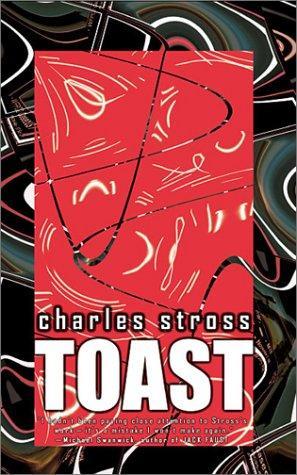
Toast
by
Stross, Charles
Published 1 Jan 2002
Certainly, back in 1968 nobody (except possibly Gordon Moore) might have expected it to result in the world we see today . . . Gordon Moore was a senior engineer working at a small company near Palo Alto, a spin-off of Fairchild Semiconductor. His new company was in business to produce integrated circuits—lumps of silicon with transistors and resistors etched onto them by photolithography. Moore noticed something interesting about the efficiency of these circuits. Silicon is a semiconductor: it conducts electricity, but has a markedly higher resistivity than a good conductor (like, say, copper). When you push electric current through a resistor you get heat, and the more resistor you push it through, the more of the current ends up warming the environment instead of doing useful work.
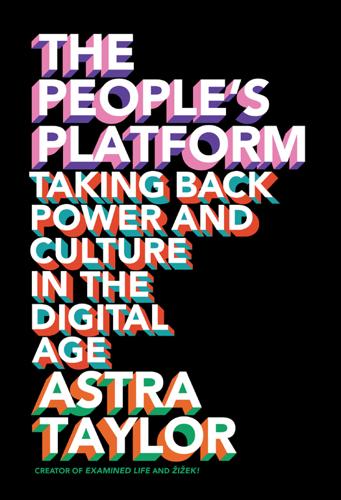
The People's Platform: Taking Back Power and Culture in the Digital Age
by
Astra Taylor
Published 4 Mar 2014
,” said the record labels in the 1980s; “The VCR is to the American film producer and the American public as the Boston Strangler is to the woman alone,” the Motion Picture Association of America’s Jack Valenti famously proclaimed.) In response, much as they do today, pirates positioned themselves as principled defenders of liberty and advocates of the public interest. Over a hundred years ago, a self-described “king of the pirates” ran the “People’s Music Publishing Company” in East London, using photolithography to reproduce sheet music, which he sold for a fraction of the going price. God, he said, intended for music to be shared (and, he told angry publishers, his cheap sheet music would lead to more sales of their legitimate versions). The king’s comments may have reflected a self-serving attempt to claim the moral high ground, but there’s no denying that over the years bootleggers have aided the spread of culture and learning, performing a service from which society has collectively benefited.

The Thinking Machine: Jensen Huang, Nvidia, and the World's Most Coveted Microchip
by
Stephen Witt
Published 8 Apr 2025
The microchip industry was more like the fashion business—if your product today resembled your product from yesterday, you had made a terrible mistake. In semiconductors, everything was reinvented from scratch every few years. This was true of the software tools used to design the chips; it was true of the ultraviolet photolithography machines used to print them; it was true of the architecture of the chips themselves. The first Nvidia chip contained a million transistors. By 2000, Nvidia’s chips contained twenty times that number, cooled by high-speed fans and packed into half the space. “All that is solid melts into air,” one early observer of capitalism wrote, or, as Andy Grove declared a while later, “We all need to expose ourselves to the winds of change.”
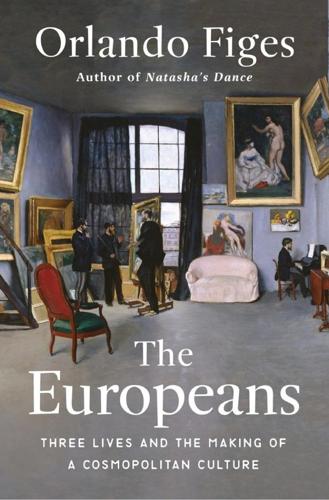
The Europeans: Three Lives and the Making of a Cosmopolitan Culture
by
Orlando Figes
Published 7 Oct 2019
‘The long wall is a lesson, and every step along it teaches something new: you see the birth, development and maturation of the great schools of Italy, Flanders and Holland, replaced slowly by the French, the only school alive today.’57 Illustrated books and museum guides played a vital role in the definition and dissemination of an art canon at this time. They began to appear for a mass market from the 1860s, when the introduction of new photomechanical techniques, such as Woodburytype, collotype, photogravure and photolithography, dramatically reduced the cost of printing reproductions in art books compared to the luxury editions of the early nineteenth century with their print engravings of artworks. In the days of black-and-white photography, the best way to reproduce a painting photographically was not directly from the painting, whose colours would create a blurred effect, but from an etching of the work.
…
Lyons Macaulay, Thomas Babingtonst Baron; History of England McConnell, Henry Macdonald, Hugh Macquet, Auguste Madrid; book trade and publishing; Cervantes’ house; music scene; Prado; railways; universal exhibition (1845) Magasin théâtral (journal) Magdeburg Mahler, Gustav Maikov, Apollon mail delivery Mainz Maisons Laffitte Malaga Malibran, Eugène Malibran, Maria (née Garcia): childhood and early life; character and singing voice; career; marriage and relationships; death; sister compared to; portrait of, Plate Malten, Therese Manaus, Teatro Amazonas Manchester; Art Treasures Exhibition (1857); Congress on Artistic and Literary Property (1866) Manet, Édouard; one-man exhibitions; A Bar at the Folies Bergère; Le Déjeuner sur l’herbe; Portrait of Émile Zola, Plate Manin, Daniele Mann, Thomas Mannheim Manns, Sir August Manzoni, Alessandro, The Betrothed Mapleson, James Marbach Marbach-am-Neckar Marcelin, Émile Maria Nikolaevna, Grand Duchess of Russia Marienbad Markovich, Maria; Folk Tales Marmier, Xavier Marseilles Martin, Josephine Marville, Charles Marx, Karl; on Great Exhibition; on railways; on world literature; Communist Manifesto; Grundrisse Marx-Aveling, Eleanor Mascagni, Pietro, Cavalleria Rusticana Massenet, Jules; Le Cid; Marie-Magdaleine Matema, Amalie Matisse, Henri Maupassant, Guy de; and death of Flaubert Maurice, Charles Mayhew, Henry, German Life and Manners Maynard, Walter Mayr, Simon Mazzini, Giuseppe Mechelen Meck, Nadezhda von Médan, Zola’s house Meilhac, Henri Meissonier, Ernest; The Chess Game Mendelssohn, Abraham Mendelssohn, Fanny Mendelssohn, Felix Ménestrel, Le (journal) Menier (chocolate company) Mérimée, Henri Mérimée, Prosper; translations; Une année en Russie; Carmen Meshchersky, Prince Vladimir Messager des théâtres, Les (newspaper) Messenger of Europe, The (journal) metric system Metternich, Princess Pauline von Metz Mexico Meyer, Liebmann Meyerbeer, Giacomo; background, early life and character; musical director at Prussian court; style of composition; at Pauline Viardot’s debut concert; director of music at Berlin Opera; first meets Pauline; Louis Viardot acts as agent for; roles for Pauline; begins writing for Paris Opéra; media management; criticisms of and attacks on; committee member of musicians’ union; premieres of Le Prophète; relations with Wagner; at Chopin’s funeral; later career and declining reputation; death and funeral; L’Africaine; Les Huguenots, ; Le Prophète; Robert le diable Mezin, Antoine Michelangelo Michelet, Jules Mickiewicz, Adam ‘Mighty Five’ (Russian composers) Milan; opera scene; publishing trade Millais, Sir John Everett Millet, Jean-François; The Shepherd Milnes, Richard Moncktonst Baron Houghton Miolan, Caroline Mirabeau, Honoré Gabriel Riqueti, Comte de Mirecourt, Eugène de, Fabrique de romans Mitau Modena Molière Moltke, Helmuth von Monet, Claude, Plate; The Beach at Trouville; The Harbour at Trouville; Impression, Sunrise money; George Sand on; Zola on; see also incomes and earnings (in the arts) Moniteur, Le (journal) Mons Montesquieu, Charles-Louis de Sedondat, Baron de; The Spirit of the Laws Monteverdi, Claudio Montevideo Montpensier, Antoine, Duc de Moore, George Moore, Thomas Moors Morales, Manuela Moreau, Gustave Morisot, Berthe Morny, Charles, Duc de Morrell, Jemima, Swiss Journal Morton, Charles Moscheles, Ignaz Moscow: literary life; music scene; railways; tourism Moscow (landmarks & places): Assembly Hall of Nobility; Dresden Hotel; English Club; Pushkin monument Moscow Herald (newspaper) Moscow University motor cars Moulin, Henri Mozart, Leopold Mozart, Wolfgang Amadeus: career; finances; popularity and position in concert repertoire; publication of works; Don Giovanni; Requiem Mtsensk Müller, Adolf Munby, Arthur Mundella Code (Britain; 1880) Munich; museums and galleries; music scene; railways Munich University Münster rebellion (1534–35) Murer, Eugène Murger, Henri Murillo, Bartolomé Esteban Murray, John Murray’s Handbooks Musard, Philippe Musée pour tous (magazine) museums and galleries (public); curatorial arrangements; guides to; numbers of visitors museums, writers’ houses music halls music publishing; copyright and intellectual property laws Musical World, The (journal) Musset, Alfred de; The Confession of a Child of the Century; ‘The German Rhine’ Musset, Paul de Mussorgsky, Modest; Boris Godunov; Khovanshchina Muzio, Emmanuele Nadar (Gaspard-Félix Tournachon) Naples; music scene; publishing trade; tourism Napoleon I, Emperor of the French Napoleon III, Emperor of the French: as Louis-Napoleon, Prince-President; as Emperor; fall of Napoleonic Wars Nash, John Nation, The (journal) nationalism, and the arts Naturalism Nekrasov, Nikolai Nemours, Prince Louis, Duc de Nesselrode, Karl Nestroy, Johann Netscher, Frans Neue Zeitschrift für Musik Neumann, Angelo New Orleans New York; Metropolitan Museum of Art New York Tribune Newcastle upon Tyne newspapers: printing and production; advertising revenue; serialization of fiction; music reviews; journalists and jobbing writers Nibelungen myth Nice; Théâtre Municipal Nicholas I, Tsar: repression of 1830 Polish uprising; musical interests; censorship powers; arrest of Turgenev and banning of Sketches from a Hunter’s Album; Crimean War; death Nietzsche, Friedrich; on European cultural identity; on Hugo’s funeral; Human, All too Human Nieuwerkerke, Émilien, Comte de Nobili, Gaetano Noé, Amédée de (‘Cham’), cartoon Nogueiras, Mathilde de Nohant Nonconformist churches Norderney North American Review Northampton Northern Bee, The (newspaper) Nouvelle Revue, La Novello and Company (music publishers) Novello, Clara Novoe Vremia (newspaper) Nüremberg Obolensky, Prince Alexander Odessa Odoevsky, Prince Vladimir Offenbach, Jacques; La Belle Hélène; La Grande-Duchesse de Gérolstein; Lischen et Fritzchen; Orpheus in the Underworld; La Vie parisienne Ollivier, Émile OLRS (Society of Lovers of Russian Literature) Omsk Opekushin, Alexander, statue of Pushkin opera: development in Western Europe; business models; publication of scores; establishment of standard repertoire; in Britain; in Russia; in Americas; in Africa and Asia; see also Bellini; Donizetti; Gluck; Meyerbeer; Mozart; Rossini; Verdi; Wagner; Weber opera houses: design; comportment of audiences Opéra-Comique (opera company) operetta; Viardot–Turgenev compositions; see also Offenbach; Sullivan Orel Orgeni, Aglaja Orientalism Orléans; railways Orléans, Duc d’ see Ferdinand Philippe, Duc d’Orléans; Louis Philippe I, King of the French Ornans Orpheus (mythological figure) Orsini, Felice Ostend Ostrovksy, Alexander Ostrovskaya, Natalia Oxford University Paganini, Niccolò Paisiello, Giovanni, The Barber of Seville Palermo; Teatro Massimo Pall Mall Gazette Palmerston, Henry Templerd Viscount Pan-Latinism Panaeva-Kartseva, Alexandra Paris (history): July Revolution (1830); February Revolution (1848); June Days (1848); Second Empire; Haussmann’s developments; Franco-Prussian War; Third Republic; Commune (1871) Paris (cultural life): art market; artists’ studios; ‘Bohemian’ culture; book trade and publishing; cafés and restaurants; department stores; museums and galleries; music scene; opera companies see Opéra-Comique; Paris Opéra; Théâtre Italien; Théâtre Lyrique; photographic studios; pleasure gardens; population totals; prostitution; railways; Russian artistic community; salons and musical soirées; shopping arcades; tourism; universal exhibitions see Exposition Universelle Paris (landmarks & places): avenue d’Alma; Arc de Triomphe; Basilica of Sainte-Clothilde; Bataclan (theatre); Bibliothèque Mazarine; Brébant’s restaurant; Café Alcazar; Café Eldorado; Café Guerbois; Café Riche; rue de Calais; boulevard des Capucines; Champ de Mars; Champs Élysées; rue Chaptal; Cirque Américain; Cirque d’Hiver; rue de Clichy; place de la Concorde; rue Daru; rue de Douai; École des Beaux Arts; École Niedermeyer; École Normale Supérieure; Eiffel Tower; avenue d’Eylau; Faubourg Saint Honoré; rue Favart; Folies Bergère; Gare du Nord; Gare Saint-Lazare; Grand Orient of France Masonic Lodge; rue de Grenelle; Hôtel Drouot; boulevard des Italiens; Jardin Mabille; Jardin Turc; Jockey Club; Latin Quarter; Louvre; Luxembourg Gardens; place de la Madeleine; Madeleine church; Magny’s restaurant; Marais; Montmartre; rue Murillo; Musée du Luxembourg; Musée Espagnol; square d’Orléans; Palais Bourbon; Palais Garnier; Palais-Royal; Panthéon; Parc Monceau; Passage des Princes; Passy; Pigalle; Pont d’Iéna; rue Richelieu; rue de Rivoli; Russian Reading Room; boulevard Saint Germain; place Saint-Georges; Salle Favart; Salle Le Peletier; Salle Ventadour; Sorbonne; rue Soufflot; boulevard du Temple; Théâtre de la Gaieté; Théâtre de la Porte Saint-Martin; Théâtre de l’Odéon; Théâtre des Bouffes-Parisiens; Théâtre du Châtelet; Théâtre du Palais-Royal; Théâtre du Vaudeville; Théâtre Louvois; rue de Tilsitt; Trocadéro Palace; Variety Theatre; rue Volney; place des Vosges Paris Conservatoire Paris Opéra Paris, Orléans, Rouen (vaudeville show) Paris Peace Conference (1849) Paris, Treaty of (1856) Parma Pascal, Blaise Pasdeloup, Jules Paskévitch, Princess Irène Pasta, Giuditta Patti, Adelina Paul de Kock, Charles Pavlovsk Paxton, Sir Joseph Pearl, Cora Pecqueur, Constantin Pélissier, Olympe Péreire, Isaac Pergolesi, Giovanni Battista Périer, Casimir-Pierre Perry, Thomas Sergeant Persiani, Fanny Peter the Great, Tsar Peters, Edition (music publishers) Pet銀fi, Sándor Petrarch Petrashevsky Circle (Russian intellectual discussion group) Philharmonic Society phonograph Photographie Anonyme (photographic studio) photography: development of; impact and influence; and literature; and painting styles and techniques; as artworks; reproduction of artworks photogravure photolithography piano manufacture and ownership Picasso, Pablo Picture Gallery, The (periodical) Pietsch, Ludwig; drawing Pillet, Charles Pillet, Léon Piloty, Karl von piracy: in book trade; in music publishing Pisa Pissaro, Camille Pitlochry, Allean House plein-air painting Pleyel (piano-makers) Pleyel, Camille Plombières Pohl, Richard Poitiers Polish uprisings: (1830–31); (1848) Polonsky, Yakov Pomey, Louis Pompei Ponchielli, Amilcare, La Gioconda Ponte, Lorenzo da Pontoise popular-music industry, development of; see also operetta portraiture; photographic postal services see mail delivery postcards Potsdam Poulet-Malassis, Auguste Pourtalès, Mélanie de Poussin, Nicolas Poznán uprising (1848) Prague; Estates Theatre; German Theatre; National Theatre Presse, La (newspaper) printing see book trade, production processes; lithography; newspapers, printing and production Probst, Heinrich prostitution Proudhon, Pierre-Joseph Proust, Marcel; À la recherche du temps perdu Prozor, Count Maurice Pskov public libraries publishing see book trade; literary journals; music publishing; newspapers Puerto Rico Puget, Loïsa Punch (magazine) Pushkin, Alexander; death, funeral and burial; copyright of works; translated editions; commemoration; his ring; Eugene Onegin; The Gypsies; Queen of Spades Pushkina, Natalia Pyne-Harrison Opera Company Raabe, Wilhelm Rachmaninov, Sergei Racine, Jean Railway Marriages (vaudeville show) railways: development; impact and influence; and music and entertainment business; and book trade; and art market; and tourism Raleigh, Sir Walter Ralston, William Rand, John Raphael Ravel, Maurice realism: in art; in literature Recio, Marie Reclam, Anton Philipp recording machines see phonograph Red Cross: British; International Reicha, Anton Reinhardsbrunn Castle Rembrandt van Rijn; An Old Man in Military Costume; Slaughtered Ox Renan, Ernest; Vie de Jésus Renoir, Auguste, Plate Repchanskaya, Elena Repin, Ilia, Plate Revolutions of 1848 Revue de Paris Revue des deux mondes Revue et Gazette musicale de Paris Revue indépendante (1841–48) Revue indépendante (1882–) Revue républicaine Reyer, Ernest Reynolds, G.
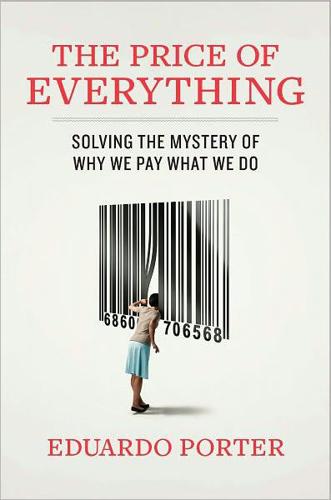
The Price of Everything: And the Hidden Logic of Value
by
Eduardo Porter
Published 4 Jan 2011
By 1900 Britain had one piano for every ten Britons. Music publishers were minting money, selling sheets—known as dots—at one shilling and four pence apiece. Puccini and Handel were written for player piano, as well as more popular acts. Inevitably, the pirates came, using the new technique of photolithography to copy tunes flawlessly and sell them for only two pence. Then, like now, much of public opinion sided with the pirates. The British Parliament passed the Musical Copyright Act of 1902, which allowed for the summary seizure of pirated music. Still, music publishers floundered, confiscating hundreds of thousands of pirate sheets only to see more appear on the market.
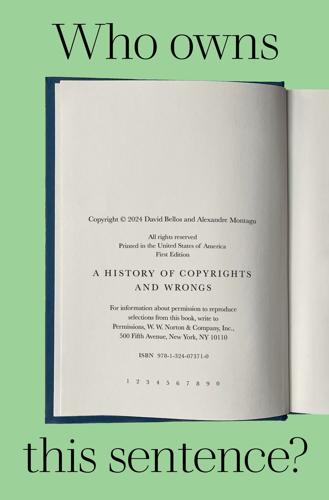
Who Owns This Sentence?: A History of Copyrights and Wrongs
by
David Bellos
and
Alexandre Montagu
Published 23 Jan 2024
“You press the button, and we do the rest” was the slogan that spread the new device around the world in a matter of years. You could use it to snap a picture of your children at play, your uncle reading his paper, a crowd at a restaurant, or a celebrity you happened to see in the street holding hands with someone who was or was not their official partner. Newspapers, now able to reproduce photographs by photolithography, lapped up such images – the more indiscreet the better. Politicians, actresses, and other newsworthy persons suddenly saw themselves in the press in poses and actions that embarrassed or angered them. What had previously been part of their personal lives, such as going out for dinner or walking down a crowded street, was now transformed into a public act.
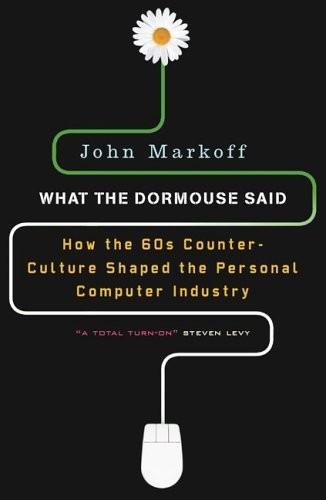
What the Dormouse Said: How the Sixties Counterculture Shaped the Personal Computer Industry
by
John Markoff
Published 1 Jan 2005
It was an environment in which a new idea would get others excited, and though Engelbart was at heart a loner, he thrived in it, not only developing concepts that extended the field of magnetic storage but discovering the fundamental principle underlying all of modern microelectronics.9 Much of what we take for granted in the modern world is the direct consequence of an industrial process known as photolithography, which is used to make silicon chips. The transistors, wires, resistors, capacitors, and other components of an integrated circuit are etched onto a thin silicon wafer using various steps involving exposure to light, heat, and chemicals, forming the circuitry in a laborious and precise layering and etching process.
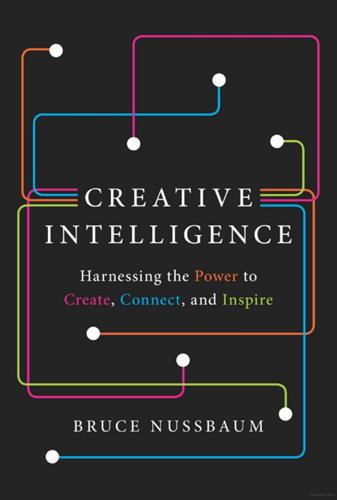
Creative Intelligence: Harnessing the Power to Create, Connect, and Inspire
by
Bruce Nussbaum
Published 5 Mar 2013
The story of the HP’s ThinkJet is a prime example of how people from different disciplines can work together to create something few imagined possible. The people who helped make the inkjet printer a reality had, among them, advanced degrees in electrical engineering and high-temperature physics, and experience with “integrated circuitry” and “photolithography”—but it was a college drop-out named John Vaught who came up with the idea for the breakthrough technology and then pursued it passionately until it became a reality. Despite his lack of traditional engineering education, John Vaught loved working at HP. For Vaught, a self-taught engineering associate and technician, “HP Labs was a wonderful place.

The Future Is Faster Than You Think: How Converging Technologies Are Transforming Business, Industries, and Our Lives
by
Peter H. Diamandis
and
Steven Kotler
Published 28 Jan 2020
Charles Lieber, though, took a very different approach. To help regenerate bone, doctors often implant a “bioscaffold” into damaged areas to provide a support structure for new tissue to grow around. About five years ago, Lieber decided to try to build a microscopic bioscaffold made from electronics. He used photolithography to etch a four-layered probe one layer at a time, creating a nanoscale metal mesh with sensors capable of recording brain activity. After rolling that mesh into a tight cylinder, Lieber sucked it up into a syringe, then injected it into the hippocampus of a mouse. Within an hour, the mesh had unfurled into its original shape, doing no damage to tissue along the way.

Arriving Today: From Factory to Front Door -- Why Everything Has Changed About How and What We Buy
by
Christopher Mims
Published 13 Sep 2021
It’s etched out of silicon and has parts that are identifiable as an integrated circuit. But its operative microscopic bits are something other than an integrated circuit—they’re actual, movable pieces, known as microelectromechanical systems, or MEMS. MEMS are one of the minor miracles of modern photolithography, the technique used for etching microchips from silicon, which is probably the single most important engineering breakthrough since mass-produced steel. To sum up, every time you rotate your phone 90 degrees to watch a video or take a picture and the phone successfully recognizes its change in orientation and pivots its interface appropriately, you’re relying on a device the size of a large grain of sand, perfected by engineers who wanted to make sure our nuclear-tipped missiles found their mark inside Soviet Russia.
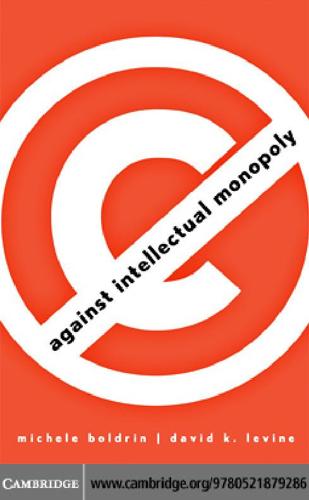
Against Intellectual Monopoly
by
Michele Boldrin
and
David K. Levine
Published 6 Jul 2008
The firms carrying out this business were not large multinationals as today, but family-owned companies, such as Casa Ricordi in Milan, which, nevertheless, managed to reach also foreign countries. Apparently these “majors” managed to collude quite efficiently among themselves. The records show that the average script sold in the United Kingdom for about a fourteen pence. Then “piracy” arrived, as a consequence of two changes: the development of photolithography and the spread of “piano mania,” which increased the demand for musical scripts by orders of magnitude. “Pirated” copies were sold at two pence each.28 Naturally the “authorized” publishers had a hard time defending their monopoly power against the “pirates,” enforcement costs were high, and the demand for cheap music books was large and hard to monitor.
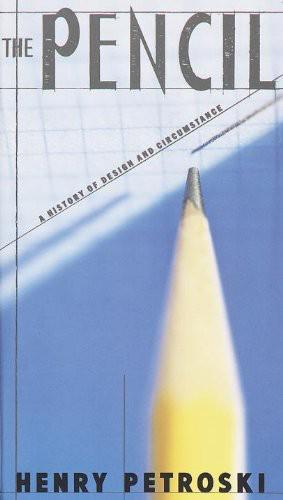
The Pencil: A History of Design and Circumstance
by
Henry Petroski
Published 2 Jan 1990
The result was an antifriction alloy known as babbitt metal, which came to be widely used in bearings for machinery. Dixon also worked with early cameras, devising a mirror that enabled a photographer to see a correctly oriented image in a viewfinder, and from his familiarity with photography and lithography he developed a photolithography process to foil counterfeiters. When the Mexican-American War broke out in 1846, there was a sudden demand for graphite crucibles to be used in making iron. To meet the demand, Dixon opened a new factory in 1847 in Jersey City, across the Hudson River from New York. Since pencils were made at one end of the crucible factory, Dixon’s may also be said to have been the first pencil factory in the New York metropolitan area.
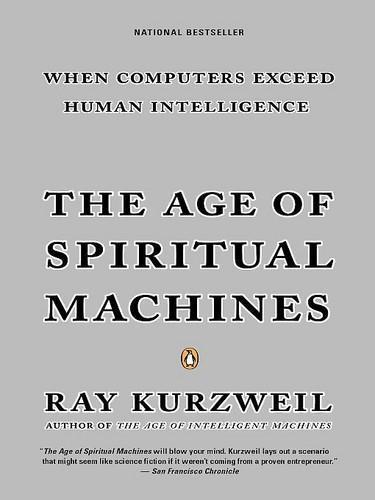
The Age of Spiritual Machines: When Computers Exceed Human Intelligence
by
Ray Kurzweil
Published 31 Dec 1998
And what does this tell us about the continuation of the exponential growth of computing when Moore’s Law dies? Is Moore’s Law just a set of industry expectations and goals, as Randy Isaac, head of basic science at IBM, contends? Or is it part of a deeper phenomenon that goes far beyond the photolithography of integrated circuits? After thinking about the relationship between these apparently diverse trends for several years, the surprising common theme became apparent to me. What determines whether time speeds up or slows down? The consistent answer is that time moves in relation to the amount of chaos.
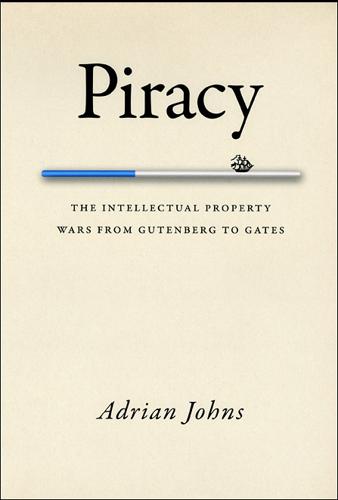
Piracy : The Intellectual Property Wars from Gutenberg to Gates
by
Adrian Johns
Published 5 Jan 2010
And in that context the fact that music only existed, in a sense, in performance complicated its plight beyond anything familiar from books and images. Two profound changes underlay the extraordinary growth in music piracy, one technological in character and related to production, the other cultural and related to use. The first was the development of photolithography. This process allowed pirates for the first time to make what were to all intents and purposes exact copies. Some piracies took an expert to tell them from the genuine article. Paper quality might differ, but in terms of legibility a piracy was typically flawless. This ability to produce practically exact copies at very low cost revolutionized piratical possibilities.
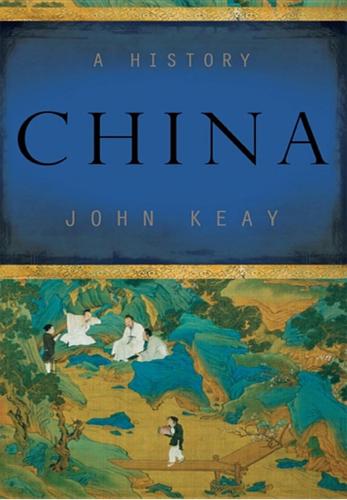
China: A History
by
John Keay
Published 5 Oct 2009
‘Thanks to Gamble’s invention, the American Presbyterian Mission Press was able to supply complete Chinese fonts to printers in other parts of China (including to the leading Shanghai newspaper Shenbao) and, indeed, all over the world.’3 Gamble’s process remained in use for over a century ‘until the advent of computer generated fonts in the 1970s’. Shanghai became the centre of the printing industry, as of most other industries. And Shenbao, founded by the Englishman Ernest Major in 1872, established itself as both the leading Chinese-medium newspaper and the pioneer in photolithography and then rotary printing. Among the numerous other publications and periodicals produced by the Shenbao press was the first journal in the vernacular. It started publication in 1876 – and ceased in 1876. Ahead of its time, it was yet the forerunner of several hundred such publications by the 1920s.
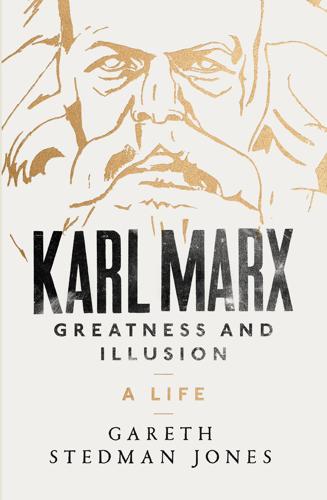
Karl Marx: Greatness and Illusion
by
Gareth Stedman Jones
Published 24 Aug 2016
Much to the disappointment of the Marx parents, once in England, after activity in Bordeaux on behalf of the Commune and in Spain on behalf of the International, Paul devoted himself to a series of business ventures, which failed largely because of his impatience and inattention to detail. In various partnerships, he attempted to establish a business in photolithography using new techniques. Jenny Marx remarked in a letter to Sorge in 1877 that he should have stuck to being a doctor. ‘Their business, printing by the procédé Gillot hasn’t been doing very well.’ There had been some improvement. But ‘Lafargue, who always sees everything through rose-tinted spectacles, is now hoping for a big JOB.’27 Needless to say, once again the venture failed and they were bailed out by Engels.
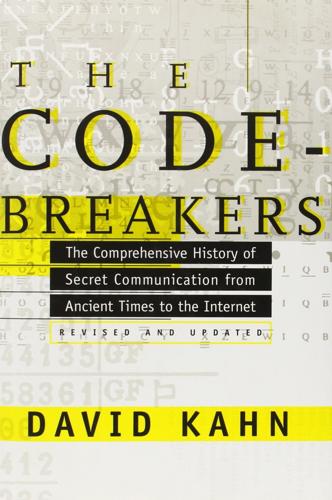
The Codebreakers: The Comprehensive History of Secret Communication From Ancient Times to the Internet
by
David Kahn
Published 1 Feb 1963
Since the key that controls each letter must be situated under its matrices’ channel, the keyboard as assembled reflects the frequency of letters in English: A font of type, showing the greater quantities of high-frequency letters This accounts for the etaoin shrdlu sometimes seen in newspapers: linotypists just run their fingers down the keys to fill out an incorrect line. Even more scientifically designed is the panel of the Mergenthaler company’s Linofilm system. This system passes light through pictures of letters onto a film, where the successive images form text usable in offset photolithography. The pictures are mounted on the panel in an arrangement that exploits not only monographic but digraphic frequencies to minimize the shifting of the panel during composition. For example, t and h lie next to one another. These examples imply that the frequencies of letters do remain fairly constant.